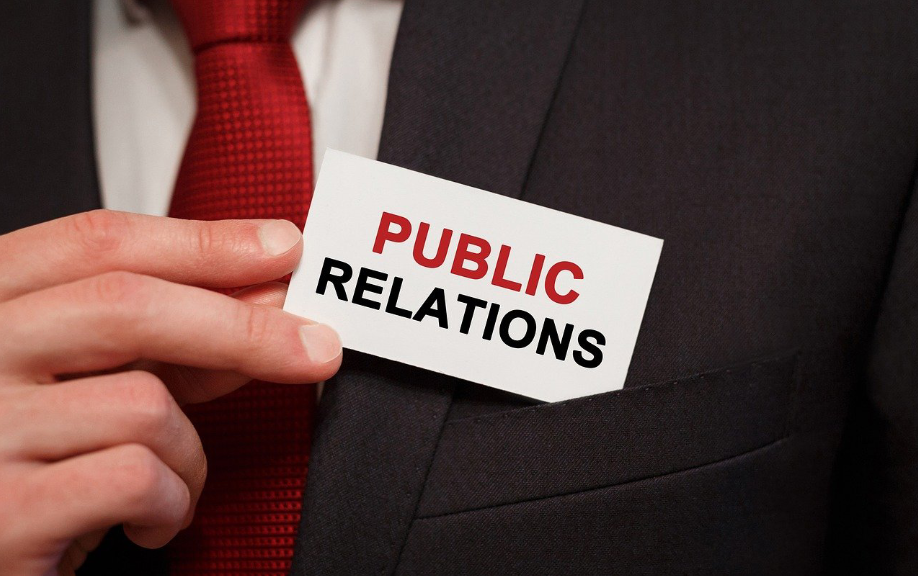Business
Lead Conversion Strategies: Transforming Prospects into Customers

Creating an ecommerce store and getting no sales makes it painful for store owners and annoying for marketers. With increased market saturation and competition, users are more skeptical than ever and have certainly developed the habit of adding items to the cart. Where this behavior of users severely deteriorates brand sales, it still gives them ideas and motivation to think outside the box and find new ways to interact with prospects.
Lead generation strategies are focused on converting prospects into loyal customers. These strategies are consumer-centric and specifically tailored to the target audience’s requirements and priorities. This blog will cover some of the best ways to improve the lead generation cycle.
Contents
Building an Effective Lead Generation Procedure
A solid B2B lead generation formula is needed to boost conversion rates. Without an efficient lead generation process, brands simply cannot survive and sustain in today’s marketplace. Discover the 3 steps that create an effective lead generation cycle.
Plan and Create Valuable Content
Content is the most valuable thing that can catch users’ attention, persuade them, and convert their attention into consideration. This phase only works when brands research their ideal customer’s interests, needs, and pain points. These pointers allow marketers to craft and write engaging content that highlights their problems and offers their products as a solution to their potential problems.
Try to create stellar website copies, website blogs, ebooks, and product captions to engage with the audience and notify them with valuable information. Creating engaging content and writing persuasive calls to action (CTA) are two of the deciding factors in converting leads and customers. Whether it is to persuade users to subscribe to their newsletter option or buy a product, persuasive and engaging content always drives results.
Engage With Email Marketing To Generate Results
Email marketing simply gets businesses more customers. Brands can use email marketing not only to send automated messages to the audience but also to use a communication medium to practice lead nurturing. Brands simply get newsletter sign-ups from one of their lead magnets around the website and can leverage interested email addresses of people to their advantage.
There are a lot of useful email marketing tools that can segment brands’ target audiences based on their shared characteristics and interests. Thereby, brands create personalized emails that pique curiosity and generate action from users. Brands can track the behavior of their target audience and can examine how they are engaging with certain email campaigns.
Use Social Channels to Enhance Lead Generation
Social channels are one of the best ways to earn leads in today’s competitive world. Seeing increased saturation and competition in our marketing channels, brands are utilizing social media platforms to encourage leads and conversions. Platforms like LinkedIn, Instagram, Facebook, and TikTok have given variety to B2B and e-commerce businesses in order to engage with their target customers.
Social media allows brands to practice organic and paid strategies to promote their digital presence and bring interest to products and services.
Top 3 Lead Conversion Strategies: Converting Prospects into Leads and Customers
- Set Up Your Omnichannel Approach
Creating a vigilant presence on all the channels is utterly valuable for converting leads. Fintech businesses always find it hard to convert leads, so creating a genuine and interactive presence on every channel is valuable. This helps businesses complete their fintech lead generation goals.
By adopting an omnichannel approach, brands can find their different audience members residing on different channels and can decide which channels they should activate for their targeted customers. Brands can use various channels to create coherent email messaging, social posts, and in-app messages.
- Regularly Categorize and Interact With Leads
Categorizing emails is one of the best strategies for businesses to streamline their lead generation process for fintech or SaaS outreach. Yet many businesses ignore this concept. Segmenting and arranging leads based on shared characteristics, needs, and behaviors makes it easy for marketers to target their audience.
This helps marketers in lead generation strategies as they can take a quick look at every lead section when they pitch a solution to them.
- Use Testimonials at Every Conversion Stage
Brands shouldn’t avoid using testimonials or customer feedback in their conversion stages. This means brands can incorporate them in their email campaigns, product pages, and conversion-focused pages, where users can become leads or customers.
Testimonials act as a solid strategy for converting leads as they bring a sense of trust and urgency among potential prospects.
Bottom Line
Lead conversion strategies play a significant role in conversion rate optimization. Brands can use efficient lead-generation procedures to convert prospects into leads to effectively create content and utilize email marketing that drives profitable results. To conclude, lead generation strategies can help businesses improve their conversion rates.
Post Disclaimer
The information contained in this post is for general information purposes only. The information, including images, is provided by Lead Conversion Strategies: Transforming Prospects into Customers, and while we endeavor to keep the information accurate, we make no representations or warranties of any kind, express or implied, about the completeness, accuracy, reliability, suitability, or availability with respect to the website or the information, products, services, or related graphics contained on the post for any purpose. Please note that images used in this post may be included for entertainment purposes and do not necessarily represent factual or real-life scenarios.
Business
AML Solutions – A Prevention Against the Disguise of Illegal Money
AML solutions are a set of rules designed to prevent money laundering and financing of terrorism. Compliance is crucial to maintain the credibility of businesses.

The purpose of anti-money laundering regulations and standards is to stop illegal funds from being passed off as genuine. The process of disguising illegal funds, narcotics, and fraud as originating from a legitimate source is known as money laundering.
Additionally, AML solutions are tactics used by financial institutions and enterprises to stop theft and illicit activity. By adhering to the guidelines established by the government, these solutions support the integrity of the companies and assist the organizations in identifying possible dangers from the clients. These three steps make up money laundering: placement, layering, and integration.
Contents
Significance of AML Solutions in Financial Institutions
These solutions are highly recommended to fight financial thefts and maintain the integrity of businesses. These can hold the customers accountable before committing the crime. Here is why the AML solution is crucial:
- These are used to prevent fraud by detecting the suspicious activities of the customers before they harm the economy.
- These help in maintaining regulatory compliance. If the organizations do not abide by the regulations, it can result in a heavy sanction or the loss of reputation.
- There are several organizations which can be seen involved in money laundering. These solutions help maintain the credibility and reliability of the businesses.
- They help prevent the risks beforehand by keeping a check on the customer’s activities.
Global AML Regulations and Standards
There are several rules and standards set by the government and the higher authorities. These solutions are not the same for every country. It depends on the laws and crime rate of every other country. Some of the major AML solution frameworks are:
- The Financial Action Task Force (FATF)
FATF is a governmental body that provides rules and regulations for averting the financing of terrorism and money laundering. This AML service provider sets the standards that are meant to secure businesses and monitor the compliance of the organizations towards it. 40 recommendations by FATF cover everything from customer’s due diligence to reporting of suspicious transactions. The institutions that fail to comply with the rules provided by FATF, will be added to their blacklist and their reputation will be at risk.
- The Bank Secrecy Act
In the USA, companies are required to follow the set standards by the Bank Secrecy Act. It provides effective solutions that can combat money laundering by regularly identifying the customers, and their suspicious activities, and maintaining useful records for the future.
- The European Union
This is an industry-leading AML solution that provides its own rules and regulations to prevent the financing of terrorism. It allows the member states to set their laws and regulations to fight money laundering. It has tackled several money laundering cases effectively by adapting itself according to the prevailing risks.
- The Financing Crimes Enforcement Network
It is a department in the US that passes several laws including AML screening solutions for financial institutions. It plays a crucial role in maintaining the integrity of the organizations and preventing them from losing their reputation.
- The United Nations
The UN is also an AML solution provider that plays a vital role in mitigating the risk of money laundering. There are many other frameworks like the IMF and the World Bank that support the United Nations and strengthen the laws to diminish money laundering and other financial thefts.
Difference Between AML and CTF
Despite being two distinct concepts, they both aim to prevent financial theft. As previously said, AML relates to the disclosure of black money that appears to be lawful and utilized in a legitimate economy. Its goal is to stop criminals from passing off illicit funds as legitimate in the economy. Drug money, corruption, and tax evasion are among its goals.
Conversely, CTF (Counter-Terrorist Financing) stops money from going to terrorist groups that carry out violent acts or have the potential to harm the economy. Its primary goal is to stop terrorist groups from receiving funding to stop extremist operations.
Conclusion
Money laundering can not be overstated when it comes to the security of financial institutions. Compliance with AML solutions is highly recommended because it can affect the integrity of the businesses. Not only financial institutions are compelled to comply with the rules but it is also crucial for other organizations as well to maintain their reliability in the market.
Post Disclaimer
The information contained in this post is for general information purposes only. The information, including images, is provided by AML Solutions - A Prevention Against the Disguise of Illegal Money, and while we endeavor to keep the information accurate, we make no representations or warranties of any kind, express or implied, about the completeness, accuracy, reliability, suitability, or availability with respect to the website or the information, products, services, or related graphics contained on the post for any purpose. Please note that images used in this post may be included for entertainment purposes and do not necessarily represent factual or real-life scenarios.
Business
What Businesses Can Learn From the World’s Most Memorable PR Disasters

Marketing is a complex world, and public relations (PR) often presents itself as a precarious balance – a double-edged sword, if you will. It bears an uncanny power, one that can not only sculpt brands and cultivate customer fidelity, but also, when mismanaged, ignite disastrous events, scarring reputations for an excruciatingly long stretch.
To navigate this intricate maze, it behoves us to dissect and glean insights from past PR catastrophes. Let’s time travel through some of history’s most unforgettable PR calamities, and distil potent lessons to bolster your brand’s communication tactics and crisis management strategies.
Contents
The Exxon Valdez Oil Spill: A Tale of Environmental Woe
The year 1989 marked one of the most catastrophic environmental tragedies our planet has witnessed. The Exxon Valdez oil spill. A tanker met with a calamitous incident and ran aground in the serene Prince William Sound, Alaska, spewing a staggering 11 million gallons of crude oil into the ocean’s lap. Public ire was directed at Exxon’s languid and ineffective response. Initial efforts to gloss over the disaster painted a picture of indifference and insensitivity, triggering immense backlash from the society-at-large and eco-warriors alike.
Exxon’s inability to shoulder immediate accountability and craft an effective communication narrative amplified the crisis. Legal manoeuvres took precedence over empathetic communication, causing irreparable damage to their public image. This episode accentuates the need for prompt, transparent, and heartfelt communication in times of crises. Feel free to contact the top public relations’ agency in Melbourne if you need a hand, it’s better than going it alone and making basic mistakes.
The Tylenol Poisoning Crisis: A Masterclass in Crisis Management
We come to 1982 now, and Johnson & Johnson found itself grappling with a PR debacle when seven innocent lives were claimed by cyanide-tainted Tylenol. Shunning any attempts to belittle the incident, they sprang into action without delay. In a decisive move, they recalled a staggering 31 million Tylenol bottles, issued public warning and worked hand-in-glove with law enforcement agencies.
Their quick, transparent approach, fused with their unwavering commitment to consumer safety, resuscitated public trust. A landmark in the industry, they introduced tamper-resistant packaging. This crisis served as a stark testament to the prowess of customer safety prioritisation and maintaining robust communication channels.
United Airlines’ Overbooking Incident: A Chapter in Customer Relations
In 2017, United Airlines found itself in the eye of a storm as a video of a passenger’s forcible eviction from an overbooked flight went viral, igniting global indignation. The company’s initial response, bereft of empathy and failing to acknowledge the gravity of the situation, was not received well.
This incident brings to light the pivotal role of customer relationship management. Firms need to ensure their policies are customer-centric, and their staff equipped to handle delicate scenarios with tact and compassion. This episode underscores the imperatives of lending an ear to customer grievances and addressing them without delay.
Lessons Learned: The Eminence of Communication and Planning
These PR disasters, albeit unpleasant, are ripe with invaluable lessons for marketers. Effective communication stands paramount in managing crises – a commitment to transparency, empathy, and accountability is non-negotiable while addressing public concerns. The importance of crisis management strategies cannot be overstated, empowering firms to react instantly and efficiently to unforeseen occurrences.
Building robust customer relationships bears equal importance. Listening to customers, valuing their feedback, and taking proactive measures to cater to their needs can amplify brand loyalty and reputation.
Conclusion: Turning Lessons Into Action
History throws light on PR disasters that serve as stark warnings for marketers. By comprehending the value of effective communication, crisis management, and customer relationship strategies, firms can gear up for potential hurdles. Implementing these lessons can shield marketers, fortify their brands, and engender trust among consumers.
Post Disclaimer
The information contained in this post is for general information purposes only. The information, including images, is provided by What Businesses Can Learn From the World's Most Memorable PR Disasters, and while we endeavor to keep the information accurate, we make no representations or warranties of any kind, express or implied, about the completeness, accuracy, reliability, suitability, or availability with respect to the website or the information, products, services, or related graphics contained on the post for any purpose. Please note that images used in this post may be included for entertainment purposes and do not necessarily represent factual or real-life scenarios.
Technology
What is com.cib.oa.wbg? A Comprehensive Guide in 2024

com.cib.oa.wbg refers to a package name associated with a specific application, likely related to office automation for the China Industrial Bank (CIB). In the context of Android applications, package names typically follow a reverse domain name notation, providing insight into the application’s purpose and origin.
Contents
Breakdown of com.cib.oa.wbg
Understanding the Components
- com.cib: Represents the China Industrial Bank, indicating the application is developed by or for this financial institution.
- oa: Stands for office automation, suggesting the app is designed to facilitate various office-related processes.
- wbg: Likely an abbreviation for a particular module or feature within the application, potentially related to workflow management or business operations.
This structure suggests that com.cib.oa.wbg is an internal or enterprise application used within CIB to streamline office processes such as document management, workflow automation, and internal communication.
Key Features and Applications
Office Automation in Banking
com.cib.oa.wbg is presumably utilized for:
- Document Management: Helps in the efficient storage, retrieval, and management of documents within the bank.
- Workflow Automation: Streamlines routine processes, reducing manual intervention and enhancing productivity.
- Internal Communication: Provides a platform for seamless communication among departments to ensure cohesive operations.
Benefits of Using com.cib.oa.wbg
- Improved Efficiency: Automates various office processes, leading to quicker task completion.
- Centralized Management: Offers a unified platform for managing documents and workflows.
- Enhanced Collaboration: Facilitates better communication and coordination within teams.
Quick Definition Box
com.cib.oa.wbg: A package name representing an application associated with the China Industrial Bank, focusing on office automation functionalities like document management and workflow optimization.
Pros and Cons of com.cib.oa.wbg
Pros
- Streamlines Processes: Simplifies office operations through automation.
- Centralized Information: Ensures that documents and communication are managed in one place.
- Enhances Productivity: Reduces time spent on manual tasks.
Cons
- Limited Access: Likely restricted to internal use within the China Industrial Bank.
- Dependence on Infrastructure: Requires robust IT infrastructure for optimal performance.
- Training Requirements: Employees may need training to use the app effectively.
FAQs About com.cib.oa.wbg
What is com.cib.oa.wbg used for?
com.cib.oa.wbg is an office automation application, probably utilized within the China Industrial Bank for tasks such as document management and workflow automation.
Is com.cib.oa.wbg available for public use?
No, it is most likely an internal application specifically designed for use within the bank’s operations.
How can I find out more about com.cib.oa.wbg?
For detailed information, contacting the China Industrial Bank or consulting their official resources would be advisable.
Comparison Table: com.cib.oa.wbg vs. General Office Automation Software
| Feature | com.cib.oa.wbg | General Office Automation Software |
|---|---|---|
| Target Audience | Internal to CIB | General business use |
| Customization | Tailored to CIB’s operations | Can be customized for various industries |
| Security Features | Bank-grade, likely robust | Varies by provider |
| Accessibility | Limited to bank employees | Available to various businesses |
Travel Tips for Office Automation Tools
- Understand the Application Scope: Ensure you know the primary functions of the application for better use.
- Seek Training if Necessary: Internal applications like com.cib.oa.wbg may require specific training.
- Regularly Update Systems: Ensure the latest version is in use for enhanced security and performance.
Relevant Statistics
- 70% of financial institutions use customized office automation tools to increase productivity.
- 85% of companies that implement workflow automation report improved operational efficiency.
- 60% of employees in office environments state that automated communication tools improve team collaboration.
Note: This article is for informational purposes only. For specific details, please refer to the China Industrial Bank’s official resources.
Conclusion
com.cib.oa.wbg appears to be a specialized office automation package used within the China Industrial Bank. Its features likely include document management, workflow automation, and internal communications, all tailored to enhance productivity and efficiency. Understanding the functions and benefits of com.cib.oa.wbg helps to appreciate how such tools streamline operations in financial institutions.
For more information about office automation and related software, visit the Office Automation Wikipedia page.
Post Disclaimer
The information contained in this post is for general information purposes only. The information, including images, is provided by What is com.cib.oa.wbg? A Comprehensive Guide in 2024, and while we endeavor to keep the information accurate, we make no representations or warranties of any kind, express or implied, about the completeness, accuracy, reliability, suitability, or availability with respect to the website or the information, products, services, or related graphics contained on the post for any purpose. Please note that images used in this post may be included for entertainment purposes and do not necessarily represent factual or real-life scenarios.
-

 Entertainment10 months ago
Entertainment10 months agoWhat is Masqlaseen? A Complete Overview
-

 Entertainment9 months ago
Entertainment9 months agoWhat is Moye Moye? Understanding the Serbian Phrase and its Meaning
-

 Entertainment9 months ago
Entertainment9 months agoWhat is soymamicoco? A Complete Guide
-

 Technology8 months ago
Technology8 months agoWhat is an XCV Panel? A Guide to Its Uses and Benefits
-

 Entertainment8 months ago
Entertainment8 months agoIs Ztec100.com Your One-Stop Shop for Digital Solutions?
-

 Business8 months ago
Business8 months agoWhat is Roadget Business?
-

 Entertainment8 months ago
Entertainment8 months agoWhat is 06shj06? – Uncover The Mystery
-

 Entertainment8 months ago
Entertainment8 months agoWho is Elon Musk? – Unveiling the Visionary Entrepreneur




